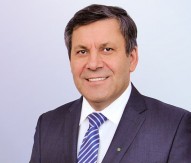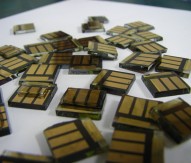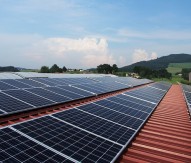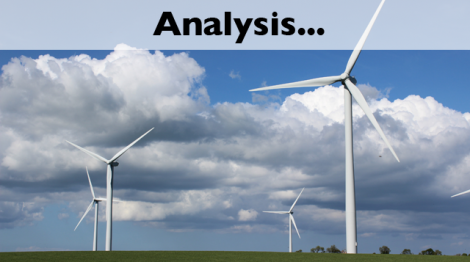
Analysis… Energy challenge
EUROPE: At INNOVEIT 2015 in Budapest, KIC InnoEnergy chief executive Diego Pavía provided his insight into the unique attributes of the company and how Europe can remain an internationally competitive innovator.
KIC InnoEnergy is the European Knowledge and Innovation Community for innovation, business creation and education in sustainable energy. The KIC is committed to bringing these three elements together to achieve innovation and consequently increase the continent’s energy security, realise cost reduction in the value chain, and cut CO2 and other greenhouse gas emissions.
KIC InnoEnergy began its operations in 2010 and now brings together 200 partners to achieve its objectives. The company has 27 shareholders, and though funding is still broadly drawn from the European Institute of Innovation and Technology (EIT), it had a budget of €300m in 2014 (its partners brought an additional €200m in 2014), up from €26m in 2010. With its partners, including research institutes, businesses and universities, KIC InnoEnergy is involved throughout the energy innovation value chain.
Focusing on all three aspects of the knowledge triangle (higher education, research and business), KIC InnoEnergy now has 400 students enrolled in its education innovation programmes, has assisted in the launch of 43 start-up companies, has supported the implementation of 60 innovative products and services, and has filed 59 patents. KIC InnoEnergy’s offices are located across Europe in France, Germany, Poland and Sweden, as well as the Benelux and Iberia regions. Its ultimate vision is to become the leading engine of innovation in the field of sustainable energy.
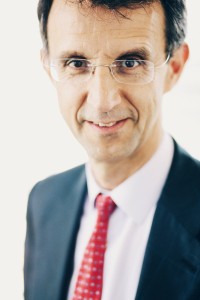
Diego Pavía © KIC InnoEnergy
INNOVEIT 2015
Taking place in Hungary in May was the major innovation conference of the EIT. INNOVEIT 2015 showcased the successes and current projects of KIC InnoEnergy, as well as the work of the other KICs and the wider EIT. To attend the conference, Portal travelled to the Hungarian capital Budapest and, on the sidelines of the three-day event, spoke to Diego Pavía, chief executive of KIC InnoEnergy, who remarked that getting ideas to market is still a major barrier to realising potential innovations.
“If we look at CorPower, one of our start-ups, it can become a blockbuster over the next five years,” he said. “We must remember that energy, unlike IT, has a maturity and lead time to market of an average of seven years – IT can be seven weeks or seven months. In that sense, CorPower could reach all its potential – possibly a €300m pre-money valuation, within five years.”
Pavía then provided his thoughts on Europe’s energy difficulties and the action the European Commission is taking to address this situation. He said that KIC InnoEnergy supports 95% of the Energy Union proposal, describing it as an “umbrella” solution. “It is very comprehensive in addressing all the spots where it hurts,” he added.
The chief executive then drew attention to other measures the Commission is taking to address energy difficulties: “You have three instruments under implementation – the Strategic Energy Technology Plan (SET-Plan), the smart specialisation strategy for a low carbon economy, and the Juncker plan.
“All those things have benefits that are well aligned with this umbrella of a European strategy in energy. We are missing only one extra aspect, which is to dramatically streamline what are called the ‘interventions’, e.g. feed in tariffs, certificates, subsidies, etc.; the last report from the Commission showed that the European retail industry is suffering from around 700 intervention measures.”
Commenting on the high electricity prices in Europe, Pavía said it is important to address the “over-intervention and over-regulation” that is causing Europe to pay “2.5-3 times as much for the kilowatt compared to the United States” and, consequently, making the continent “basically non-competitive”.
KIC solution
Despite such difficulties, KIC InnoEnergy is helping to provide solutions: “What we bring is unique – all the activities that we carry out have a market impact; there is an identified benchmark against other products and services in the market and where a customer is willing to be an early adopter.”
KIC InnoEnergy is now pouring its efforts into the supply chain and focusing on “innovation and man power creation,” Pavía continued. “We mobilise the whole of the supply chain, so the idea meets market demand and uptake, and that’s unique because it’s not done anywhere else.”
Another goal of KIC InnoEnergy is to bring the sectors of business and higher education closer together, encouraging greater cross-disciplinarity. Pavía explained that the company “puts a microphone to industry” to investigate what niche developments are required in order to “change your business in terms of innovation and meet market demand”. He then outlined how KIC InnoEnergy takes this information and “tailors the content” to see how to “deliver it to those new game changers.
“We always listen to the market,” he added. “Our adopters of innovation are listening to market demand … when I deliver the product, if it is something you need, then you will buy it and take it onboard.”
International innovation
In January 2015, KIC InnoEnergy and Questel Consulting published a report to provide an in-depth understanding of the global competitive energy landscape. The ‘Top 10 Energy Innovators in 100 Energy Priorities’ study is the first to simultaneously identify and rank the top industry and academic players worldwide according to their innovation competencies in 100 energy priorities defined in KIC InnoEnergy’s Innovation Strategy for 2014-2019.
According to the results, 80% of innovative industry leaders come from European regions, Japan, and the United States. China leads the list of academic innovative players with a strong presence in all 100 priorities, with a 40% frequency of occurrence in the top ten rankings, yet the country’s industrial players are almost absent.
Europe and the United States are the best positioned in the global energy landscape with both industrial and academic players. The European players lead some of the thematic fields analysed, such as wind energy, ocean energy or solar thermal electricity.
Pavía explained that KIC InnoEnergy had recently delivered the findings of the report to various directorates-general in the European Commission, describing the investigation as having particular benefits for business: “The value of this report for industry is that they can identify who the top innovators across the value chain are in the topics where they want to develop business, and then consider how to involve them in their needs.
“If we look at the academic world, you see that Asia is outstanding, but let’s not be fooled by the numbers. As China’s strategy is led by the government, all the IP-based research in China will not be homed by SMEs or companies but by the Chinese Academy of Sciences … because they will have a lot more muscle to protect, defend and develop this. It’s a country strategy that Europe doesn’t have, to carefully reap these outstanding positions in the academic world.
“On industry, you see Europe is leading in many sectors. So let’s not be naïve; let’s be protective, defensive and capitalise on valorising this research back into Europe. We have a big chance.”
Competitiveness
Pavía then described how Europe could suitably maintain a lead in energy developments compared to its international rivals, drawing attention to the importance of communication and breaking down barriers, including those in regards to regulation: “What would you like as a product manufacturer? The answer: that your market is as big and as uniform as possible. So let us have a European market for energy products … and let us have it as big as possible. Let us homogenise regulation and streamline it and organise it, and then your market will be 400 million people; you will not only be the first, but there will also be growth.
“We can then compete because energy is complex; if Europe knows something, it is about complex problems. America is a specialist on its own problems, not complex problems. Asia is very good at copying; remember that Asia is an emerging energy show, so they are just building without looking for efficiency, whereas in Europe, we are mature and stagnating – we have a problem that we have to solve, so we are developing technology that has so far not been needed.”
Expanding on KIC InnoEnergy’s role in improving the European energy landscape, Pavía continued: “We are an enabler and we are addressing the energy system in a different way, which is so far improving and is a bit more efficient. Only through us are systemic challenges addressed. In previous public private partnerships, because they were not long term, they were addressing very small activities and not addressing systemic problems.
“The best thing we can do is to deliver what we promised and to have a good track record, and then no-one will be able to contest anything. We have delivered over the last five years, and we intend to increase our path.”
Breaking down the barriers to innovation, ensuring good communication and bringing together key innovation actors will help to ensure the continent can effectively meet its energy challenges. KIC InnoEnergy is providing the platform and potential – all that remains is for Europe’s innovators to lead.
Diego Pavía
European Institute of Innovation and Technology
This article first appeared in the seventh edition of Horizon 2020 Projects: Portal, which is now available .

